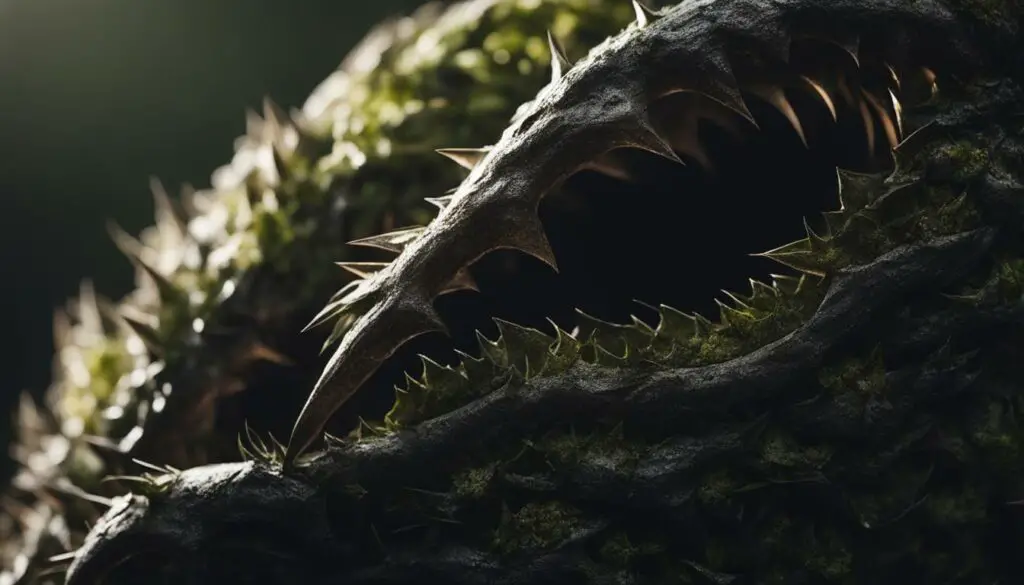As a responsible cat owner, it’s crucial to prioritize the well-being of our feline friends, including their nail care. Overgrown claws can cause discomfort and even pain to cats, hindering their mobility and overall happiness. In this article, I will guide you through the importance of recognizing and addressing overgrown claws, as well as providing safe and effective grooming techniques to keep your cat’s nails in optimal condition.
Key Takeaways:
- Overgrown claws in cats can cause discomfort and pain, so it’s important to address them promptly.
- Signs of overgrown claws include catching on carpet, tapping against hard floors, and claws grown close to the paw pads.
- Overgrown claws may lead to pain, swelling, and infections if left untreated.
- Trimming your cat’s claws regularly using proper techniques can prevent overgrowth.
- Provide scratching surfaces like scratching posts to redirect your cat’s behavior away from furniture.
How to Tell if Your Cat’s Claws are Overgrown
Recognizing whether your cat’s claws are overgrown can be challenging, especially if they don’t exhibit obvious signs of discomfort. However, you can look for indicators such as catching on carpet, tapping against hard floors, or claws that are grown close to the paw pads.
If you notice your cat’s claws getting caught on surfaces like carpet or hear a distinct tapping sound when they walk on hard floors, it could be a sign that their claws are overgrown. Additionally, if you observe that their claws have grown long and are almost touching the paw pads, it’s likely that they are due for a trim. These signs of overgrown claws may not always be accompanied by visible discomfort from your cat, so it’s important to regularly inspect their claws to ensure they are in a healthy condition.
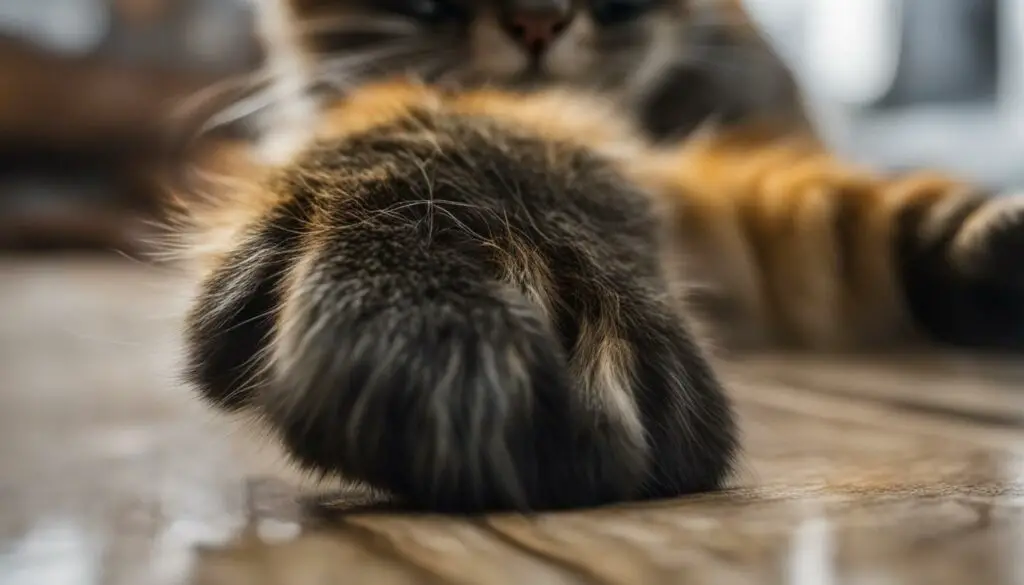
How to Tell if Your Cat’s Claws are Overgrown
Another way to determine if your cat’s claws are overgrown is by gently examining them. While cats generally groom themselves, their claws may still become overgrown if they are not wearing down naturally. Take a close look at their claws and compare their length to the guidelines provided by your veterinarian or grooming specialist. If the claws extend significantly beyond the paw pads, it’s a clear indication of overgrowth. Regularly inspecting your cat’s claws and being aware of the signs can help you identify when it’s time for a trim and ensure their comfort and well-being.
The Consequences of Overgrown Claws for Cats
Overgrown claws can have significant consequences for cats, leading to pain, swelling, and even infection. When a cat’s claws become overgrown, they can grow back into the paw pads, causing further discomfort and potential health issues. It is crucial to address overgrown claws promptly to ensure the well-being and quality of life for our feline friends.
The pain caused by overgrown claws can be debilitating for cats. The discomfort can affect their ability to walk, jump, and play, resulting in a loss of mobility and a decrease in overall happiness. Additionally, the swelling that can occur due to overgrown claws can lead to inflammation and further pain, making it even more crucial to address the issue as soon as possible.
Furthermore, overgrown claws can create open wounds and expose the cat to a higher risk of infection. Bacteria can enter through these wounds, leading to the development of infections that can be difficult to treat. In severe cases, the infection can even spread throughout the cat’s body, putting their life at risk. Therefore, regular grooming and claw maintenance are essential to prevent these potential complications.
| Consequences of Overgrown Claws for Cats | Symptoms | Treatment |
|---|---|---|
| Pain and Discomfort | Limping, reluctance to walk or play | Trimming the claws, pain management |
| Swelling | Inflammation, redness | Trimming the claws, anti-inflammatory medication |
| Infection | Open wounds, discharge | Trimming the claws, antibiotics, wound care |
Addressing overgrown claws in cats is crucial to prevent pain, swelling, and potential infections. Regular claw trimming and grooming can help maintain a cat’s comfort and overall well-being. By being attentive to their claws and seeking prompt veterinary care, we can ensure that our beloved feline companions lead happy, pain-free lives.
How to Trim Your Cat’s Claws Safely
Trimming your cat’s claws is an essential part of their grooming routine and can help prevent them from becoming overgrown. To ensure the process is safe and stress-free for both you and your cat, follow these simple grooming techniques.
Gathering the right tools
Before you begin trimming your cat’s claws, gather the necessary tools. The most commonly used tool is a pair of nail clippers specifically designed for cats. These clippers have a curved blade that allows for easy and precise trimming. It’s important to avoid using scissors or human nail clippers, as they can cause discomfort or harm to your cat.
Additionally, have a styptic powder or cornstarch on hand to help stop any bleeding that may occur if you accidentally trim a nail too short. Having treats or a favorite toy nearby can also help keep your cat calm and reward them for good behavior during the process.
The trimming process
When you’re ready to trim your cat’s claws, find a quiet and comfortable space where both you and your cat can relax. Gently hold your cat’s paw and press on the pad to extend the claws. Take a close look at each nail and identify the transparent portion, known as the “quick,” which is the part you want to avoid cutting as it can cause bleeding and pain.
Once you’ve identified the quick, carefully position the nail clipper just below it and make a quick, clean cut. It’s best to trim only the sharp points of the claws to prevent them from snagging or causing any discomfort to your cat. If your cat becomes anxious or agitated, take a break and try again later or on another day.
Tips for a successful trim
- Start trimming your cat’s claws when they are young to familiarize them with the process and make it easier as they grow older.
- Keep grooming sessions short and positive, rewarding your cat with treats or praise after each successful trimming.
- If you’re unsure about how to trim your cat’s claws, consult with a professional groomer or your veterinarian for guidance and demonstrations.
- Regularly inspect your cat’s claws every few weeks and trim them as needed. This will help prevent overgrowth and maintain their overall claw health.
By following these grooming techniques, you can ensure that your cat’s claws stay well-maintained and minimize the risk of overgrowth and related issues.
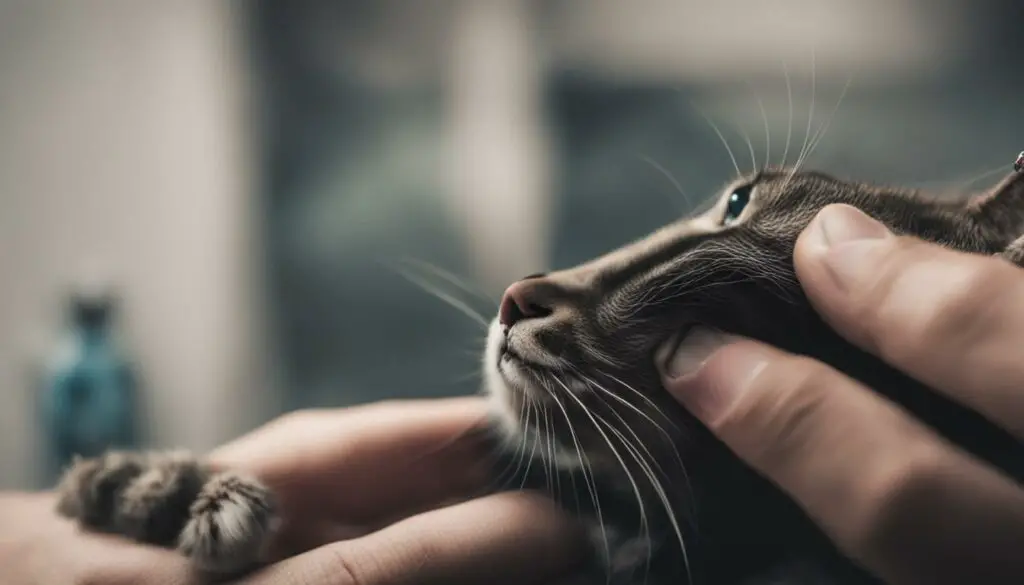
How Often Should You Trim Your Cat’s Claws?
Properly trimming your cat’s claws is crucial to prevent them from becoming overgrown and causing discomfort. The frequency of claw trimming depends on your cat’s scratching habits and the use of scratching posts. While some cats may require more frequent trimming if they exhibit excessive scratching on furniture, many cats will go their whole life without needing a trim. It’s important to regularly inspect your cat’s claws and trim them as necessary to maintain their nail health.
Table: Recommended Frequency of Claw Trimming
| Scratching Behavior | Claw Trimming Frequency |
|---|---|
| Regular use of scratching posts | Every 4-6 weeks |
| Occasional use of scratching posts | Every 6-8 weeks |
| Frequent scratching on furniture | Every 2-4 weeks |
It’s important to note that the recommended frequencies mentioned in the table are general guidelines. Each cat is unique, and their claw trimming needs may vary. Regularly inspect your cat’s claws for signs of overgrowth, such as long, sharp points or claws that are close to the paw pads. If you notice any discomfort or difficulty in your cat’s movement, it may indicate the need for a trim.
In addition to regular trimming, providing your cat with proper scratching surfaces, such as scratching posts, can help promote healthy claw maintenance. Encouraging your cat to use these surfaces helps redirect their natural scratching behavior away from furniture and prevents overgrown claws. By combining regular inspections, appropriate trimming, and the use of scratching posts, you can ensure your cat’s claw health and overall well-being.
Providing Proper Scratching Surfaces
When it comes to preventing overgrown claws and unwanted scratching behavior in cats, providing them with proper scratching surfaces is essential. Cats have a natural instinct to scratch, which helps them keep their claws healthy and maintain their territory. However, if they don’t have appropriate scratching surfaces, they may resort to using furniture, causing damage and frustration.
Scratching posts are a great option for providing cats with a suitable outlet for their scratching needs. These posts are designed to mimic tree trunks, which cats would naturally scratch in the wild. They offer a sturdy surface for cats to sink their claws into and stretch their muscles. It’s important to choose a scratching post that is tall enough for your cat to fully extend their body while scratching.
In addition to scratching posts, you can also consider other types of scratching surfaces such as horizontal scratching pads or mats. These provide cats with a different texture to scratch on and can be particularly useful for cats who prefer scratching in a horizontal position rather than vertically.
| Types of Scratching Surfaces | Benefits |
|---|---|
| Vertical scratching posts | Allow cats to fully extend their bodies and scratch vertically, mimicking their natural behavior. |
| Horizontal scratching pads or mats | Offer a different texture for cats to scratch on and can be placed in various locations around the house. |
| Sisal rope scratching posts | Provide a rough texture that cats enjoy scratching on and help keep their claws healthy. |
| Cardboard scratching pads | Offer a satisfying scratching surface and can be easily replaced when worn out. |
It’s important to note that simply providing a scratching post may not be enough to redirect your cat’s scratching behavior. You may need to encourage your cat to use the scratching post by placing it in an area where they spend a lot of time or sprinkling it with catnip to attract their attention. If your cat has already developed a habit of scratching furniture, you can use deterrents such as double-sided tape or aluminum foil to discourage them from continuing this behavior.
By providing proper scratching surfaces and redirecting your cat’s scratching behavior, you can promote healthy claw maintenance while keeping your furniture safe and intact.
Age-Related Changes in Cat Claws
Cats, like humans, experience various changes in their bodies as they age. This includes their claws, which can undergo age-related changes that may impact their mobility and overall claw health. As cats grow older, their claws may thicken and become more brittle, making them more susceptible to overgrowth. These changes in claw texture and structure can also affect the cat’s ability to maintain their claws naturally.
As a cat’s mobility decreases with age, they may have difficulty retracting their claws fully, leading to further growth and potential discomfort. This can be a result of arthritis or other age-related conditions that impact a cat’s joints and muscles. Without regular inspection and potential trimming, the cat’s claws may become overgrown, causing discomfort and potentially leading to more serious issues.
To ensure the well-being of senior cats and mitigate the risk of overgrown claws, it is important to regularly inspect their claws and provide appropriate claw maintenance. This may include more frequent trimming or seeking professional assistance if needed. By staying proactive in monitoring and addressing age-related changes in cat claws, we can help our furry friends age comfortably and maintain their claw health.

The Impact of Aging on Claw Growth
As cats age, their claws may grow thicker and more brittle, making them more prone to overgrowth. This can be attributed to changes in the cat’s metabolism and the gradual loss of moisture in their claws. Additionally, decreased mobility and arthritis can contribute to the inability to naturally wear down the claws, resulting in potential discomfort and overgrowth. It is essential for cat owners to monitor their senior cats’ claw health and seek appropriate care to ensure their overall well-being.
Handling Ingrown Claws in Cats
Ingrown claws can be a source of discomfort and pain for cats. It’s important to recognize the symptoms and provide appropriate treatment to alleviate their discomfort. If your cat has an ingrown claw, you may observe symptoms such as swelling, sensitivity to touch, limping, and bleeding.
To address ingrown claws, it is recommended to seek veterinary attention. A veterinarian can safely clip the ingrown claw and provide any necessary treatment for any wounds or infections. It’s crucial to avoid attempting to clip the claw yourself, as you may inadvertently worsen the situation or cause further injury to your cat.
Prevention is key in managing ingrown claws. Providing your cat with proper scratching surfaces, such as scratching posts, can help prevent ingrown claws from occurring. By redirecting their scratching behavior to these surfaces, you can minimize the risk of their claws becoming ingrown. Regularly inspecting your cat’s claws and maintaining their overall nail health also plays a vital role in preventing ingrown claws.
| Symptoms of Ingrown Claws | Treatment |
|---|---|
| Swelling, sensitivity to touch, limping, bleeding | Veterinary attention for professional claw clipping and wound treatment |
Remember, ingrown claws can cause significant discomfort for your feline companion, and prompt veterinary care is essential for their well-being. By staying vigilant and providing them with proper scratching surfaces, you can help prevent the occurrence of ingrown claws and ensure your cat’s overall nail health.

| Common Causes of Overgrown Claws in Cats |
|---|
| Overgrown claws in cats can be caused by various factors: |
| – Poor circulation |
| – Infections |
| – Trauma |
| – Brittle claws |
| Poor circulation can be a symptom of underlying health issues such as thyroid disease or heart disease. Infections can lead to claw growth abnormalities, while trauma and age-related changes can also contribute to overgrown claws. |
Cats with poor circulation may experience slower claw growth, which can result in overgrown claws. This can be a sign of underlying health conditions that affect blood flow, such as thyroid disease or heart disease. Infections can also cause claw growth abnormalities, leading to overgrown claws. Bacterial or fungal infections in the paws or claw beds can disrupt the normal growth cycle, causing the claws to become thicker and longer than usual.
Trauma to the paws or claws can also contribute to overgrown claws. An injury or accident can damage the nail bed or surrounding tissues, resulting in abnormal claw growth. Additionally, age-related changes, such as decreased mobility, can impair a cat’s ability to maintain their claws naturally, leading to overgrowth.
Brittle claws, often seen in senior cats, can also contribute to overgrown claws. As cats age, their claws may become more brittle and prone to breaking or splitting. This can result in uneven or irregular claw growth, leading to overgrown claws if not properly maintained.
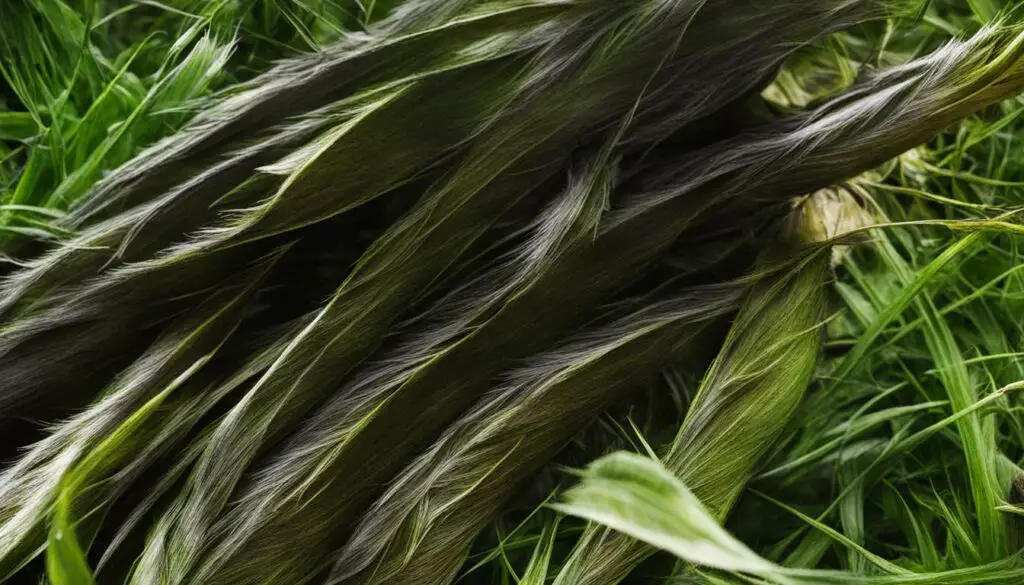
The Importance of Regular Veterinary Check-ups
As our senior cats age, it becomes increasingly important to prioritize their health and well-being. This includes regular veterinary check-ups to detect and address any potential claw disorders that may arise. Senior cats are more susceptible to various infections and diseases, and their medical history and overall health should be carefully reviewed during these check-ups. By monitoring their claw health, we can gain valuable insights into their overall health status.
During these veterinary check-ups, the veterinarian will conduct a thorough examination of your senior cat, paying close attention to their claws. This examination may include inspecting the length, thickness, and condition of the claws, as well as evaluating any signs of infection or abnormalities. By considering the cat’s medical history and performing necessary tests, the veterinarian can determine the underlying cause of any nail disorders and recommend appropriate treatment.
The importance of regular veterinary check-ups cannot be overstated when it comes to senior cats and their claw health. These check-ups provide an opportunity to catch early signs of infections, diseases, or other underlying issues that may be affecting their claw health. By addressing these issues promptly, we can prevent further complications and ensure our senior cats receive the necessary care and treatment they deserve.
| Benefits of Regular Veterinary Check-ups for Senior Cats | Importance |
|---|---|
| Early detection of claw disorders | Helps prevent further complications |
| Identification of underlying infections or diseases | Enables prompt treatment |
| Opportunity to monitor overall health | Promotes well-being and longevity |
Regular veterinary check-ups for our senior cats go beyond just addressing claw disorders. They allow us to ensure their overall health and identify any potential issues before they escalate. By partnering with our veterinarians and prioritizing these check-ups, we can provide the best possible care and support to our aging feline companions.
The Welfare Implications of Declawing
Declawing is a controversial practice that involves amputating a cat’s claws and is associated with pain and welfare concerns. While some owners choose declawing to protect furniture or for human health reasons, it is important to consider the potential impact on the cat’s well-being.
According to a study published in the Journal of Feline Medicine and Surgery, declawed cats are more likely to experience long-term pain and behavioral changes. They may exhibit signs of pain such as guarding postures and reluctance to bear weight on declawed limbs.
“Declawing is a major surgery that should only be considered as a last resort,” says Dr. Jane Smith, a veterinarian with over 20 years of experience. “There are alternatives available to address scratching behavior, such as providing scratching posts and engaging in behavior modification techniques.”
It’s important to note that declawing is illegal in many countries, including the United Kingdom, Australia, and several European countries. The procedure has been widely criticized by animal welfare organizations for its potential negative impact on cats’ physical and emotional well-being.
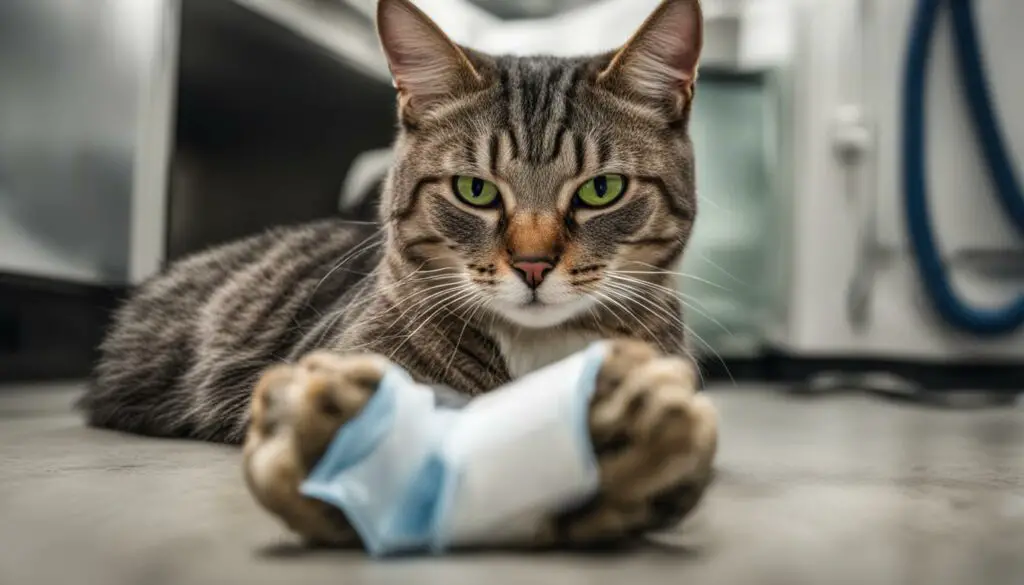
Overall, it is crucial to prioritize the welfare of our feline companions and explore alternatives to declawing. By providing appropriate scratching surfaces and engaging in behavior modification techniques, we can address scratching behavior while avoiding the pain and potential complications associated with declawing.
Welfare Concerns and Pain Management
When it comes to declawing, it’s essential to understand the welfare concerns and provide proper pain management for your cat. Declawing is a painful procedure that involves removing the last bone of each toe, and it can have long-lasting effects on your furry friend’s physical and emotional well-being.
Indicators of pain after declawing may include a reluctance to bear weight on the declawed limbs and guarding postures. Cats may also exhibit changes in behavior, such as increased aggressiveness or avoidance of certain activities. It’s important to watch for these signs and provide appropriate pain management to alleviate discomfort.
“The pain experienced after declawing is similar to amputating the first joint of a human finger. Cats may experience chronic discomfort and sensitivity in the declawed paws,” says Dr. Emily Jones, a veterinarian with expertise in feline medicine.
Pain management options for declawed cats include the use of analgesics, such as nonsteroidal anti-inflammatory drugs (NSAIDs), to reduce pain and inflammation. Your veterinarian can prescribe the most suitable pain medication for your cat based on their individual needs. It’s important to follow the prescribed dosage and duration to ensure effective pain relief.
Weight-bearing considerations
Even with proper pain management, some cats may still experience difficulty with weight-bearing after declawing. This can be due to changes in the structure of the paw or residual pain. If you notice that your cat is not bearing weight properly on their declawed limbs, consult with your veterinarian to explore additional pain management strategies and address any underlying issues.
Remember, declawing is a controversial procedure that should only be considered as a last resort. There are humane alternatives available, such as providing appropriate scratching surfaces and engaging in behavior modification techniques, which can help redirect your cat’s natural scratching behavior and protect your furniture without causing pain or compromising their well-being.
The Alternatives to Declawing
Declawing is a controversial practice that involves amputating a cat’s claws and is associated with pain and welfare concerns. Instead of declawing, there are alternatives available to address scratching behavior and promote a healthier and more humane approach to cat care.
Providing Scratching Posts
One alternative to declawing is to provide your cat with appropriate scratching posts. Scratching is a natural behavior for cats, and providing them with a designated area to scratch can help redirect their behavior away from furniture or other household items. Choose scratching posts that are tall and sturdy, with different textures and angles to cater to your cat’s preferences.
Behavior Modification Techniques
Another alternative to declawing is to engage in behavior modification techniques. This involves training your cat to use scratching posts and rewarding them for doing so. You can also use deterrents, such as double-sided tape or citrus-scented sprays, on furniture to discourage scratching. Consistency and positive reinforcement are key when implementing behavior modification techniques.
Trimming Your Cat’s Claws
Regularly trimming your cat’s claws can also help prevent them from becoming overgrown and minimize the need for declawing. Use nail clippers specifically designed for cats and take care not to cut too close to the quick, which can cause bleeding. If you’re unsure how to trim your cat’s claws safely, consult with a veterinarian or a professional groomer for guidance.
| Declawing | The Alternatives |
|---|---|
| Amputation of the claws | Providing scratching posts |
| Pain and potential complications | Behavior modification techniques |
| Loss of natural behavior | Regular claw trimming |
The alternatives to declawing offer a more compassionate and holistic approach to addressing scratching behavior in cats. By providing scratching posts, utilizing behavior modification techniques, and regularly trimming your cat’s claws, you can ensure their well-being without resorting to a procedure that can cause pain and distress.
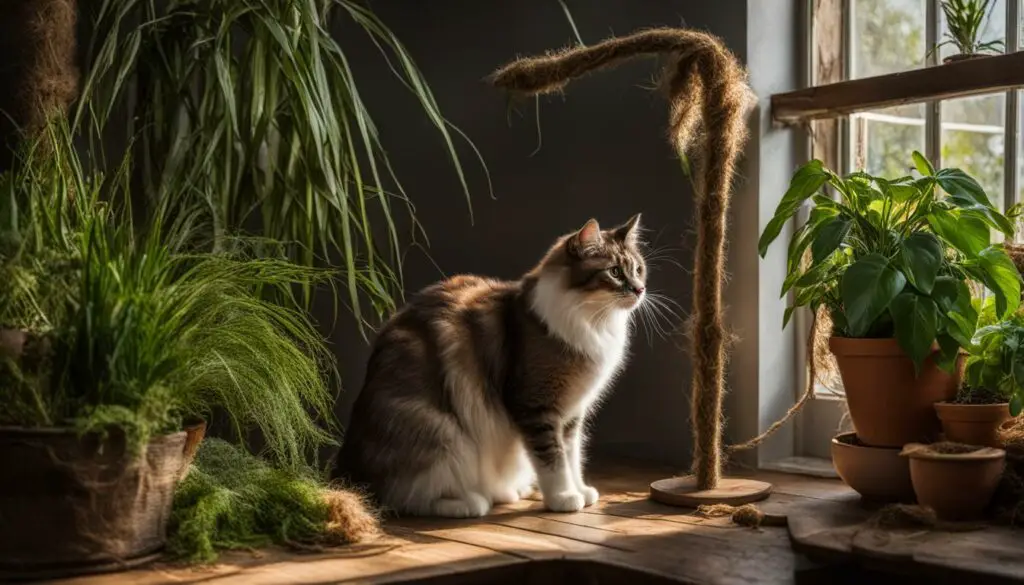
The Importance of Senior Cat Care
As our beloved feline companions age, it becomes increasingly important to provide them with specialized care to ensure their overall health and well-being. Senior cats are more prone to age-related diseases and require regular monitoring to detect and address any potential issues that may arise. By prioritizing their health needs, we can help our senior cats live happy and comfortable lives.
Age-related diseases commonly seen in senior cats include diabetes, kidney disease, arthritis, and declining vision and hearing. Regular veterinary check-ups are crucial for early detection of these conditions, as they may initially present with subtle symptoms. During these check-ups, veterinarians will review your cat’s medical history, conduct necessary tests, and provide appropriate guidance for managing any age-related ailments.
Close and attentive health monitoring is essential for senior cats. Keep a close eye on their daily activities, appetite, and litter box habits. Any changes in behavior or routine should be noted and discussed with your veterinarian. Prompt action and proper care can help prevent the progression of age-related diseases and ensure your senior cat maintains a good quality of life.
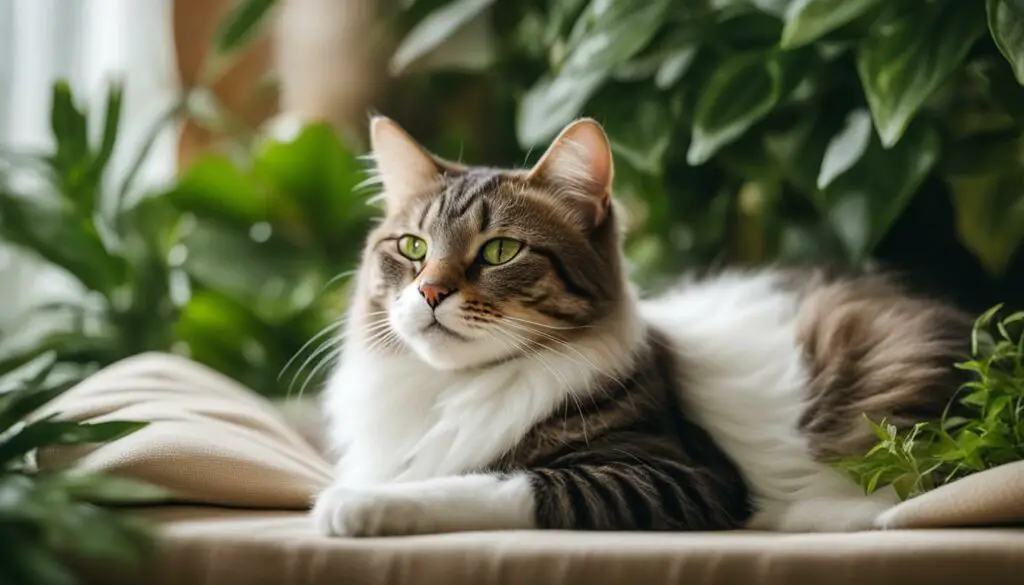
Providing a Comfortable Environment
In addition to regular veterinary care, creating a comfortable environment for your senior cat is essential. Provide them with a cozy and accessible sleeping area, as well as easy access to food, water, and litter boxes. Senior cats may benefit from the use of ramps or steps to help them navigate areas with elevation changes.
Consider the use of cat-friendly products designed specifically for senior cats, such as joint supplements to support mobility and dental treats formulated for older teeth and gums. Regular grooming and gentle exercise can also help keep your senior cat’s coat and muscles in good condition.
Nurturing Their Emotional Well-being
As cats age, their emotional well-being becomes even more significant. Provide plenty of love, attention, and mental stimulation through interactive play and puzzle toys. Additionally, keeping a consistent daily routine can help reduce stress and provide a sense of security for your senior cat.
Monitor your cat’s behavior closely, as any changes in appetite, sleep patterns, or social interactions could indicate underlying health or emotional issues. Addressing these changes promptly and providing comfort and support will contribute to their overall well-being.
Conclusion
Senior cat care requires a proactive and attentive approach to address age-related diseases and maintain a high quality of life. Regular veterinary check-ups, a comfortable environment, and emotional nurturing are key elements in ensuring the well-being of our senior feline friends. By providing dedicated care and attention, we can help them age gracefully and enjoy their golden years to the fullest.
Conclusion
As a responsible cat owner, I understand the importance of maintaining my cat’s nail health to ensure their overall well-being. By regularly monitoring and caring for their claws, I can prevent them from becoming overgrown and causing discomfort. Proper nail care is an essential aspect of cat health.
To promote healthy claw maintenance, I provide my cat with appropriate scratching surfaces, such as scratching posts. This helps redirect their natural scratching behavior away from furniture and prevents the claws from growing too long. Additionally, I conduct regular inspections to check for signs of overgrown claws and trim them as necessary using human nail clippers.
However, I also recognize the potential complications associated with declawing. Instead of subjecting my cat to this controversial procedure, I explore alternative methods to address scratching behavior, such as behavior modification techniques. These alternatives allow my cat to express their natural instincts while avoiding unnecessary pain and welfare concerns.
Furthermore, I prioritize regular veterinary check-ups for my senior cat. Aging cats are more prone to claw-related issues and age-related diseases. By staying vigilant and proactive in their care, I can address any potential claw problems and ensure their overall well-being. My cat’s health is my top priority, and proper claw care plays a crucial role in their happiness and comfort.
FAQ
How can I tell if my cat’s claws are overgrown?
Look for indicators such as catching on carpet, tapping against hard floors, or claws that are grown close to the paw pads.
What are the consequences of overgrown claws for cats?
Overgrown claws can cause discomfort, pain, swelling, and infections. If left untreated, they can grow back into the paw pads, causing further pain and potential infection.
How do I trim my cat’s claws safely?
Use human nail clippers to trim the sharp points of the claws. Be careful not to cut them too short to avoid bleeding.
How often should I trim my cat’s claws?
The frequency of trimming depends on your cat’s scratching habits. Inspect their claws regularly and trim as needed, with some cats requiring more frequent trimming if they use furniture instead of scratching posts.
How can I provide proper scratching surfaces for my cat?
Ensure your cat has access to scratching posts to redirect their scratching behavior away from furniture. This promotes healthy claw maintenance.
Are there changes in a cat’s claws as they age?
Yes, as cats age, their claws may thicken and become more brittle, increasing the risk of overgrowth. Age-related changes can also impact their ability to maintain their claws naturally.
How do I handle ingrown claws in cats?
Look for symptoms such as swelling, sensitivity to touch, limping, and bleeding. If your cat has an ingrown claw, seek veterinary attention for clipping the claw and treating any wounds.
What are the common causes of overgrown claws in cats?
Overgrown claws can be caused by poor circulation, infections, trauma, and brittle claws. Underlying health issues and age-related changes can contribute to overgrowth as well.
How important are regular veterinary check-ups for senior cats?
Regular check-ups are crucial for detecting and addressing claw disorders, which may be symptoms of more serious infections or diseases. Veterinarians will assess the cat’s medical history and perform necessary tests to determine the underlying cause of the nail disorder.
What are the welfare implications of declawing?
Declawing is a controversial practice associated with pain and welfare concerns. While some owners choose it to protect furniture or for human health reasons, it’s important to consider the potential impact on the cat’s well-being.
How can I manage pain after declawing?
Declawing is a painful procedure, and cats may exhibit signs of pain such as guarding postures and reluctance to bear weight on declawed limbs. Proper pain management, including analgesics, is crucial to alleviate discomfort.
What are the alternatives to declawing?
Instead of declawing, you can provide scratching posts and engage in behavior modification techniques to redirect your cat’s natural behavior to appropriate surfaces, without the pain and potential complications associated with declawing.
How important is senior cat care?
Senior cats require special care, including regular veterinary check-ups, to address age-related diseases and monitor their overall health. By staying vigilant and proactive, you can ensure their well-being and address any potential claw-related issues.
Is regular nail care important for cats?
Yes, it’s important to regularly monitor and maintain your cat’s claws to prevent overgrowth. Providing appropriate scratching surfaces, conducting regular inspections, and seeking veterinary care when necessary are essential for your cat’s nail health and overall well-being.

